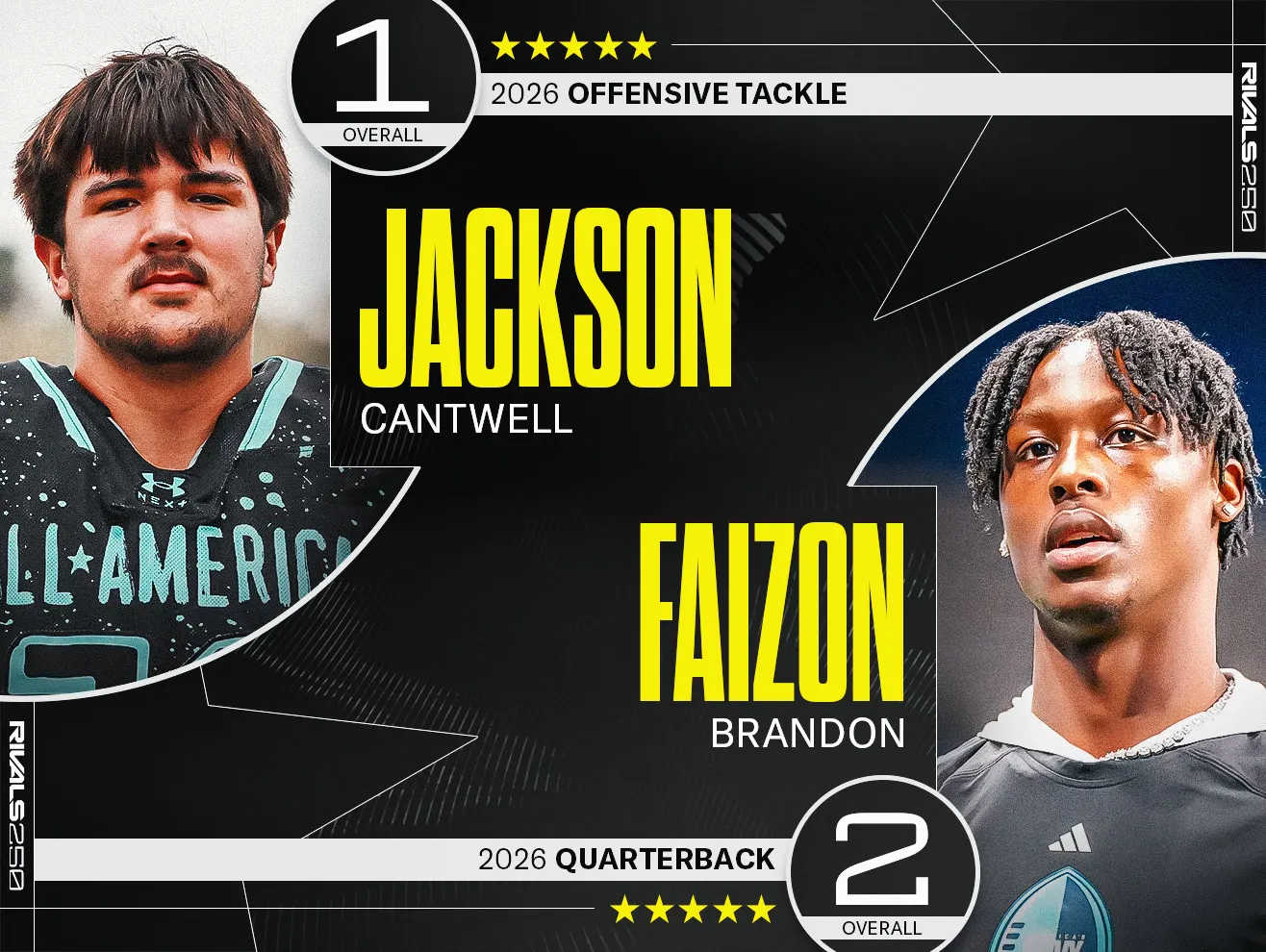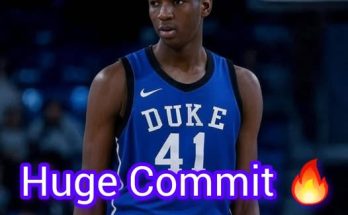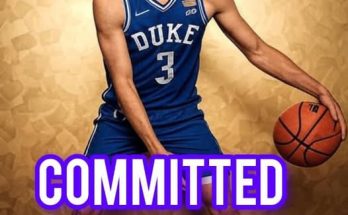The latest update to the Rivals250 for the 2026 recruiting class has arrived, and as expected, it brings with it plenty of movement, surprises, and new storylines that are sure to define this recruiting cycle. With more evaluations, camps, and film to assess, Rivals analysts have adjusted the rankings to reflect rising stars, positional dominance, and the kind of athletic traits that college coaches covet at the next level. Leading the class is offensive tackle Jackson Cantwell, who retains his No. 1 overall status after another dominant offseason showing. The 6-foot-8, 300-pound lineman out of Missouri is everything programs want in a blindside protector: strong, nimble, technically sound, and mature beyond his years. His combination of size, athleticism, and work ethic continues to separate him from the pack, and barring injury or regression, he appears locked in as the face of this class.
Behind him, several elite talents are pushing for that top spot, including a pair of dynamic quarterbacks who are beginning to attract serious attention from national powerhouses. Julian Lewis, who reclassified into the 2025 class previously but then reaffirmed his position in 2026, has once again become a focal point. Known for his arm strength, poise in the pocket, and leadership, Lewis continues to climb after a string of stellar performances at high-profile 7-on-7 events. Meanwhile, another signal-caller, Davi Belfort Jr., son of MMA legend Vitor Belfort, has surged up the list thanks to his improved mechanics and decision-making. He has shown excellent anticipation and command of complex offensive systems, putting him firmly in five-star territory.
In the backfield, Ezavier Crowell has become a standout at the running back position. Crowell is a rare combination of speed and power, showcasing a downhill style that thrives between the tackles, but with enough burst to bounce outside and make defenders miss in the open field. His dominance at recent camps has propelled him to the No. 1 running back spot in the Rivals250. His stock is rising with every touch, and he’s already hearing from the likes of Alabama, Georgia, and Ohio State. Crowell isn’t just a bruiser, either—his receiving ability out of the backfield makes him a legitimate three-down threat, an increasingly valuable trait in today’s game.
At wide receiver, few names have created more buzz than Tristen Keys. A 6-foot-3 playmaker with elite separation ability, Keys had a breakout season in 2024, hauling in over 1,200 yards and double-digit touchdowns. His physicality at the line of scrimmage, combined with refined route-running and elite ball tracking, makes him a nightmare matchup for any cornerback. LSU, Georgia, and USC are heavily involved in his recruitment, and with his frame and skill set, he’s likely to remain among the top 10 overall prospects moving forward. Joining Keys in the receiver discussion is Keenan Rankins, a smooth slot receiver with elite footwork, high football IQ, and reliable hands. Rankins doesn’t have the prototypical size, but his shiftiness and quick release make him an explosive weapon.
The defensive side of the ball in the 2026 class is equally loaded. Five-star linebacker Derrek Cooper has emerged as a game-changing presence. At 6-foot-1 and over 200 pounds, Cooper plays fast, hits hard, and can line up in multiple spots. His versatility is what stands out most—he can run sideline to sideline, drop into coverage, and blitz off the edge. His 100-meter time of 10.88 seconds and a laser-timed shuttle under 4.3 seconds make him one of the most athletic defenders in the country. Coaches love his instincts and motor, and he’s drawing comparisons to former Clemson star Isaiah Simmons. He’s also played running back and safety, adding to his all-around profile.
One of the biggest risers in the updated rankings is safety Joey O’Brien, who jumped more than 100 spots following a dominant showing at OT7 in Dallas, where he earned MVP honors. O’Brien, now ranked comfortably in the top 150, has an impressive blend of size, ball skills, and leadership. He’s quickly becoming a top target for Notre Dame, Penn State, and Clemson, among others. His rise is emblematic of how fluid the rankings can be as prospects continue to develop physically and mentally. The same could be said for cornerback Jordan Irons, a long, twitchy defender who has quietly climbed into the top 50. Irons’ ability to mirror receivers and create turnovers makes him one of the more intriguing secondary prospects in the class.
Rivals also made changes to its position classifications in this update, a move aimed at reflecting the evolution of modern football. Edge defenders are now separated from traditional defensive ends, recognizing the hybrid role that many top athletes now play. Interior offensive linemen are listed as IOLs to distinguish them from tackles, while receivers are split between outside and slot designations. Defensively, nickelbacks are given their own label (NICK), showing the increasing importance of the position in pass-heavy defensive schemes. This shift has helped give scouts and coaches a clearer picture of where players are best suited in college systems.
Several teams had a particularly strong showing in this rankings release. LSU’s 2026 class made headlines with multiple big movers, including defensive tackle Richard Anderson, who jumped 80+ spots, and safety Aiden Hall, who climbed into the top 30. Wide receiver Jakai Anderson made his debut in the Rivals250, reinforcing LSU’s grip on regional dominance. Meanwhile, Arkansas picked up a significant commitment from four-star athlete Dequane Prevo, a versatile two-way star with legitimate Power Five ability on either side of the ball. He chose the Razorbacks over a host of top programs including Oklahoma and Penn State, giving Sam Pittman’s staff a major win early in the cycle.
Another noteworthy development is the rise of several under-the-radar quarterbacks who could crack the top 100 with strong fall performances. Names like Malachi Dawson and Blake Garrison are trending upward thanks to elite measurables and strong camp performances. Garrison, in particular, has drawn interest for his leadership and off-script ability. The battle for QB2 and QB3 in the class is wide open behind Julian Lewis, and these next few months will be critical as high school seasons kick off and further evaluations are conducted.
Specialists are also beginning to gain traction in the class, with two kickers and a punter now listed among the Rivals250 watchlist. Although they aren’t ranked yet, their inclusion signals a growing appreciation for special teams value at the elite level. As early enrollees become more common and programs look for plug-and-play solutions, having a reliable kicker or punter can often be the difference in tight conference games.
With several national camps and the 2025 college football season still ahead, more changes are certainly on the horizon. The Rivals250 for the 2026 class is a snapshot of today’s top talent, but it’s just the beginning. These players are entering a crucial stretch in their development—one that will include their junior seasons, more offers, official visits, and eventually, commitment announcements. Coaches, fans, and media alike will continue watching closely as these future stars cement their legacy on the high school gridiron and prepare to transition to college football’s biggest stages.
The recruiting world remains fast-paced and ever-changing, but the updated Rivals250 offers clarity and insight into who the next generation of college football stars might be. Whether it’s the physically gifted Jackson Cantwell anchoring the trenches, the electrifying Ezavier Crowell scoring from anywhere on the field, or the hard-hitting Derrek Cooper dominating defenses, the 2026 class is filled with prospects who will soon become household names. As each camp, season, and commitment unfolds, expect this list to continue to evolve, reflecting the talent and unpredictability that makes college football recruiting so compelling.



